Displyay
The micro (µ) LED display is a next-generation display that applies a flour-sized ultra-fine µLED chip. It is expected to be applied to small displays such as AR glasses and VR glasses, flexible displays that can be bent, and displays for automobiles that get hot because it is resistant to heat.
"UV LED + RGB phosphor method" that excites three colors of phosphors, red, green and blue by µUV LED is highly productive and has excellent color reproducibility. Phosphor is a highly efficient and stable inorganic material that has been used for fluorescent lamps and various displays for more than half a century. A cutting edge display is realized by combining with µUV LED.
For detailes on the mechanism of µLED display, please refer to the page of "What is µLED display?"

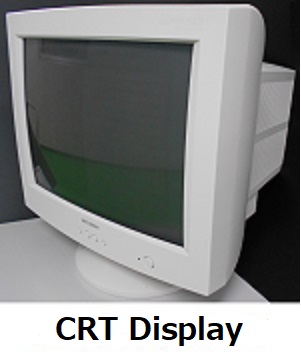 The phosphor used in the µUV LED display is basically an orthodox inorganic material used in fluorescent lamps, brown tube TV (CRT) and plasma TV (PD), and has not only high emission efficiency and long life, but also low cost.
The phosphor used in the µUV LED display is basically an orthodox inorganic material used in fluorescent lamps, brown tube TV (CRT) and plasma TV (PD), and has not only high emission efficiency and long life, but also low cost.
In principle, PD applies a voltage of a hundred and several tens of volts to generate UV light in the cell into which the gas is injected, which excites the phosphor. In contrast, µUV LED emits light at a voltage of only 3.2V. As a result, the structure can be greatly simplified, and a low power consumption display with a particularly small screen can be realized.
 Display types and principles
Display types and principles
 CRT display
CRT display
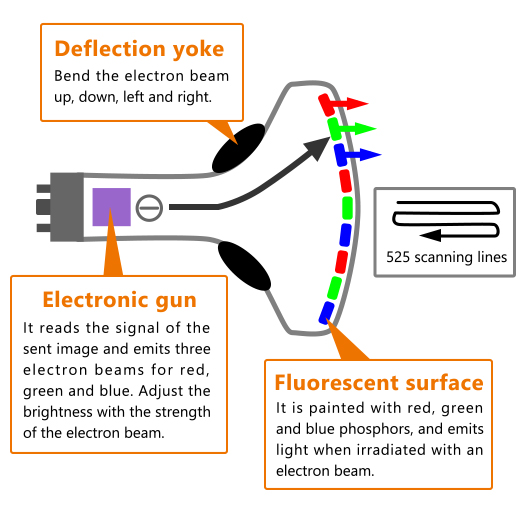
In the CRT display, the electrons (electron beam) emitted from the electron gun are bent by the deflection yoke (magnetic field) and irradiated on the phosphor-coated fluorescent surface.
 Plasma display
Plasma display
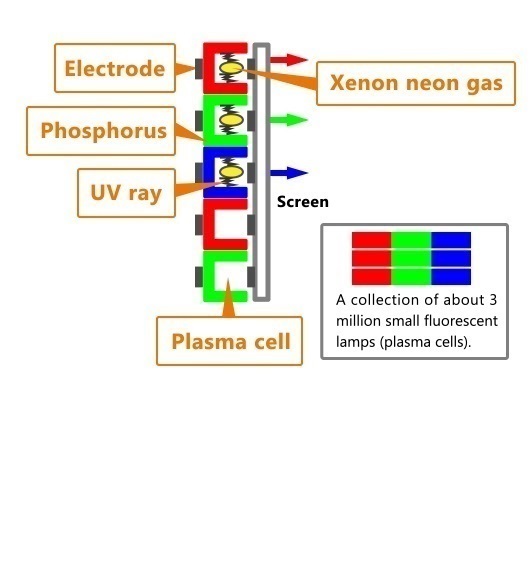 When an electron collides with mercury in a vacuum, the mercury becomes a plasma state and emits ultraviolet rays when it returns to its original state. Photoluminescence is generated when the UV rays irradiate the phosphor.
When an electron collides with mercury in a vacuum, the mercury becomes a plasma state and emits ultraviolet rays when it returns to its original state. Photoluminescence is generated when the UV rays irradiate the phosphor.
The PD controls about 3 million small plasma cells in the screen to create an image.
The PD has a clear image, but it does not only generate a large amount of heat, but also high power consumption and high cost. So it lost to the LCD.
 Liquid crystal display (LCD)
Liquid crystal display (LCD)
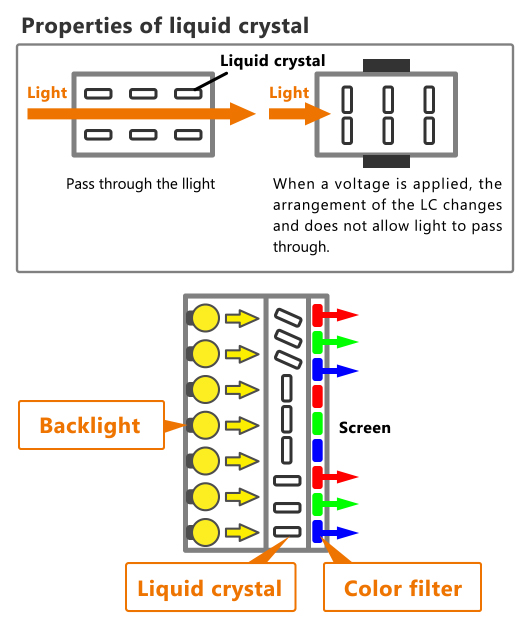 Liquid crystal (LC) is the principle of shadow painting. When a foward voltage is applied, the LC molecules turn at once, and the LC acts as a shutter for light. And the amount of light that passes can be adjusted by the magnitude of the voltage.
Liquid crystal (LC) is the principle of shadow painting. When a foward voltage is applied, the LC molecules turn at once, and the LC acts as a shutter for light. And the amount of light that passes can be adjusted by the magnitude of the voltage.
The color filter emits light by irradiating light from the back of the LC.
 OLED display
OLED display
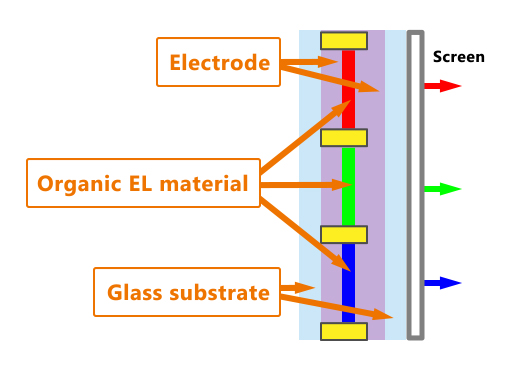 The OLED display is a self-luminous display in which the colored element itself emits light. It has a high contrast ratio, low power consumption, a wide viewing angle and enables smooth image expression. But it has the disadvantages that it is not suitable for high temperature environments and has a short life.
The OLED display is a self-luminous display in which the colored element itself emits light. It has a high contrast ratio, low power consumption, a wide viewing angle and enables smooth image expression. But it has the disadvantages that it is not suitable for high temperature environments and has a short life.
 µUV LED display "UV LED + RGB phosphor method"
µUV LED display "UV LED + RGB phosphor method"
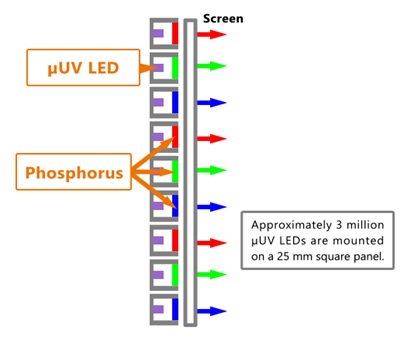 The µUUV LED display is a display in which the phosphor emits light in full color, and is characterized by a high contrast ratio and low power consumption.
The µUUV LED display is a display in which the phosphor emits light in full color, and is characterized by a high contrast ratio and low power consumption.
In addition, the phosphor which has been technologically developed for more than half a century, not only enables beautiful image expression, but also realizes a long-life and flexible display.
 Movie of RGB phosphor excited by UV LED
Movie of RGB phosphor excited by UV LED
| Emission Area of UV LED Module:20×24mm² Current density converted to micro LED chips : about 1mA/mm² |
Emission of RGB phosphor film by UV LED |


